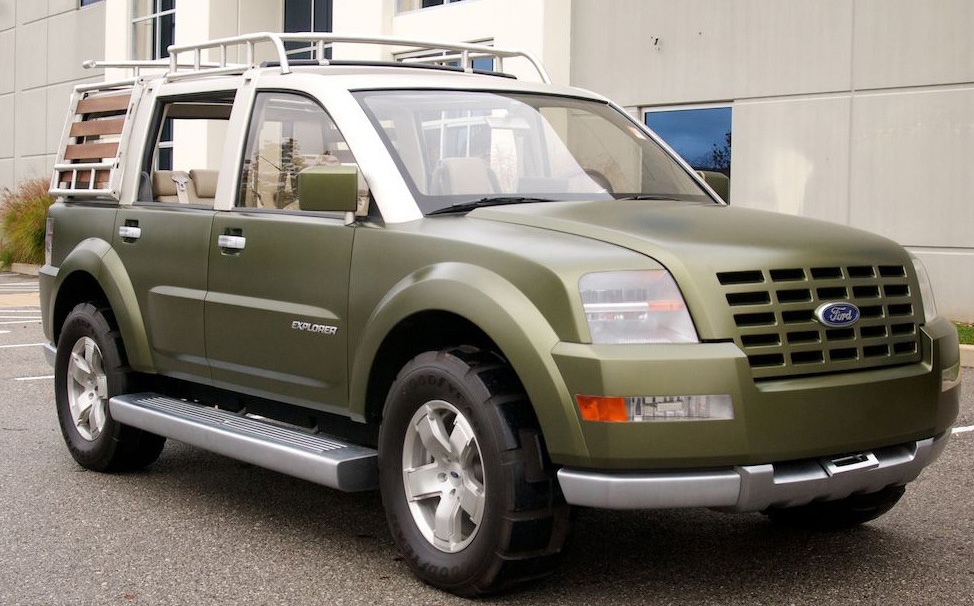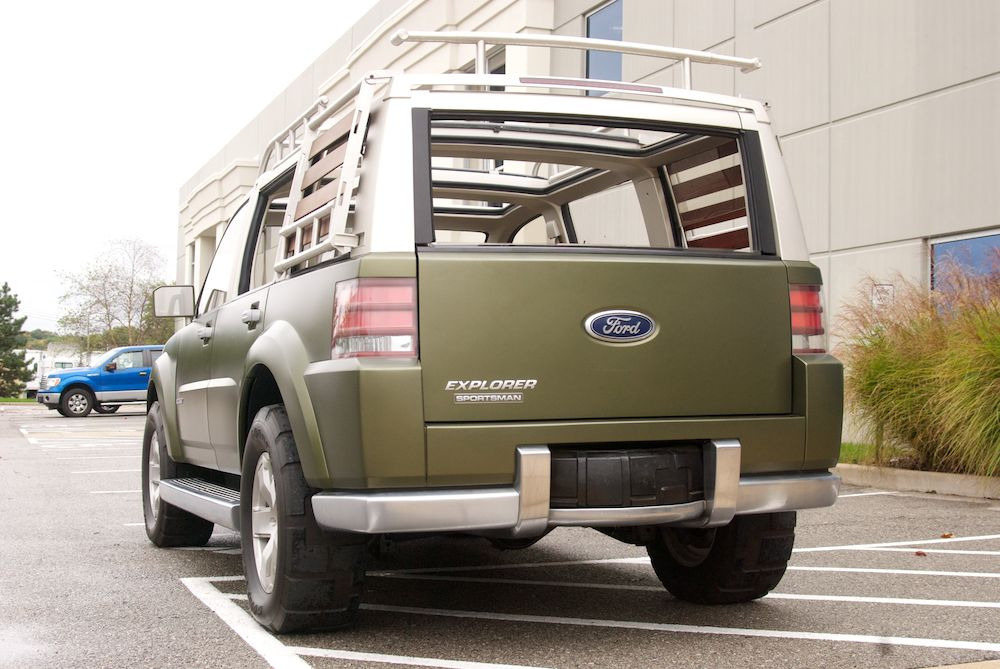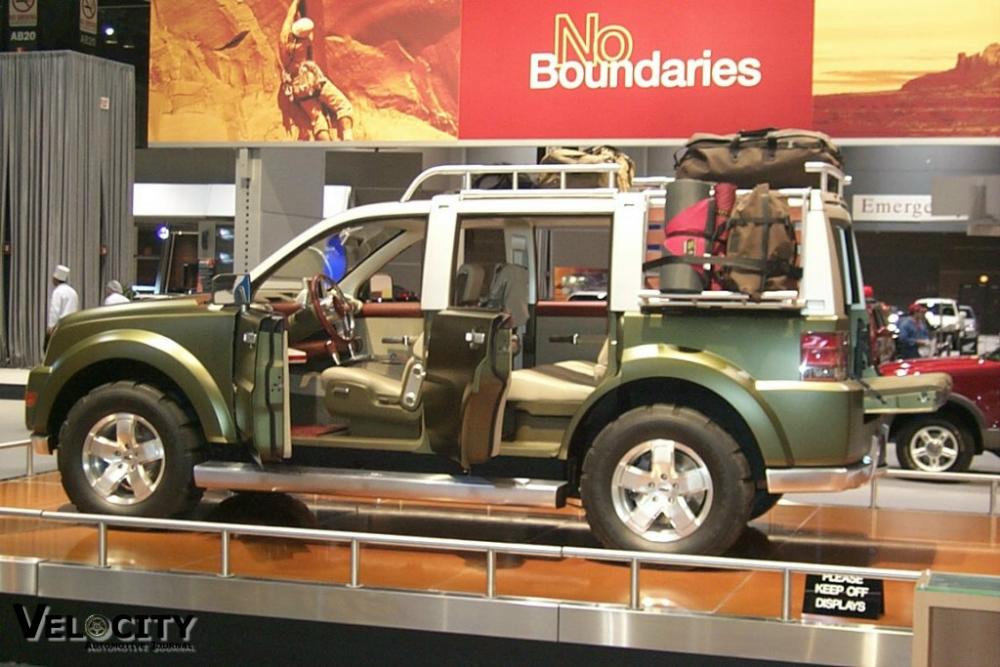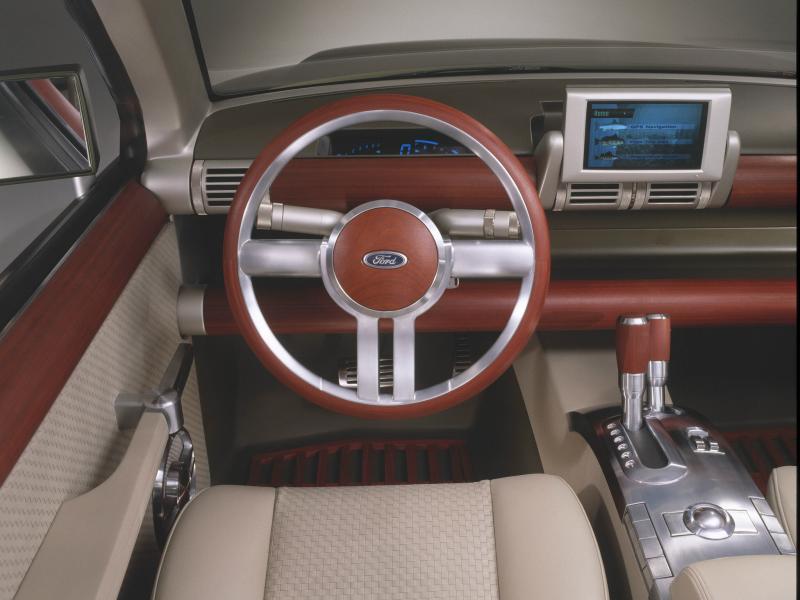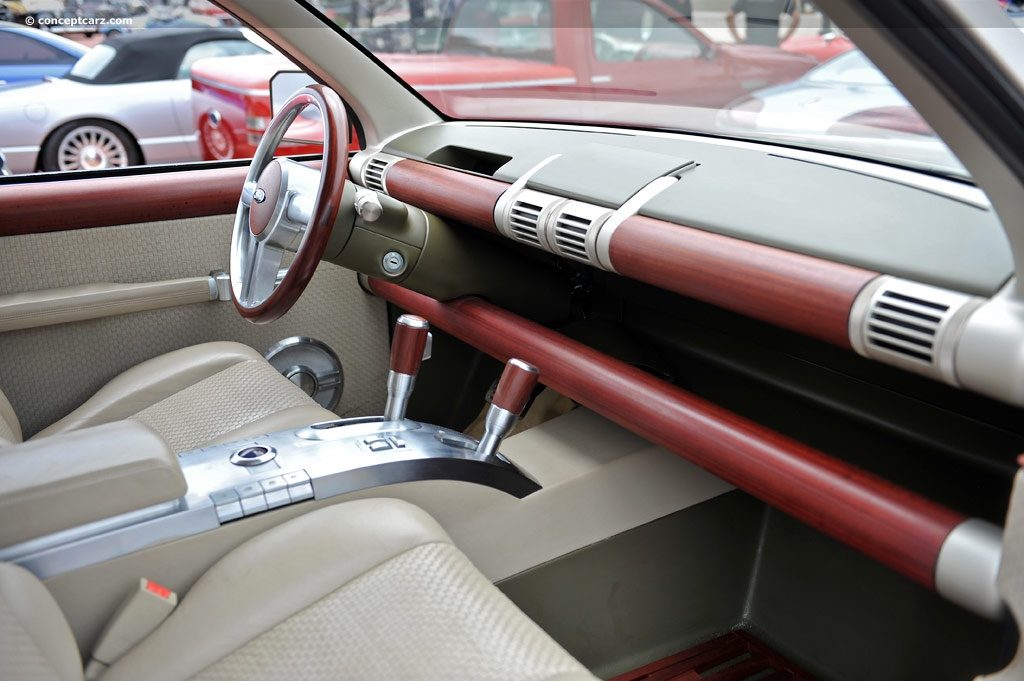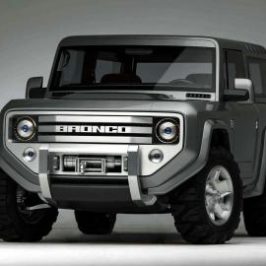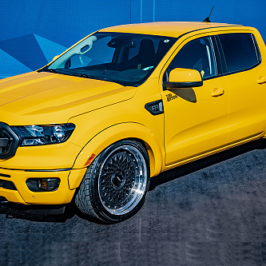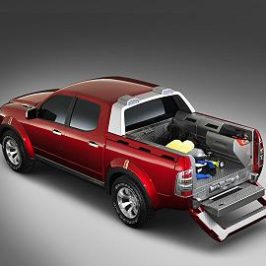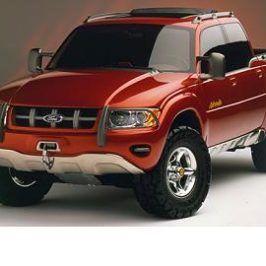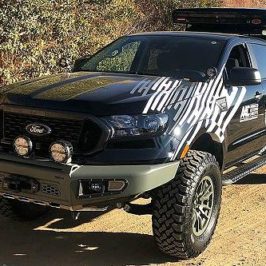DETROIT, Jan. 9, 2001 –
The new Ford Explorer Sportsman concept is designed to fulfill fly anglers’ dreams of finding the calm and unspoiled waters of the perfect, wilderness fishing location.
“The Explorer Sportsman builds on the tradition and inherent values of the Ford Explorer and further illustrates innovative ways for us to connect with consumers’ active and diverse lifestyles,” says J Mays, Ford Motor Company vice president of Design.
Based on the 2002 Ford Explorer, the concept vehicle is designed to take the angler into the wilderness for a “back to nature” fly-fishing adventure and outdoor experience.
Outfitted with Scott Flyfishing Rods, the Explorer Sportsman is finished in a low-gloss, satin metallic green, coupled with satin- finished front and rear chrome skid-plates that provide ultimate durability for two-track expeditions to rivers, lakes, streams and the woodlands in between.
The simple, genuine exterior appearance is achieved through the skillful execution of an integrated hood and grille.
The running boards, which deploy when the doors are opened for easy entry and exit, also serve as additional storage for fishing rods and other fishing equipment.
The Explorer Sportsman concept makes extensive use of Bloodwood, a type of wood that is common near coastal open moist forests in Queensland, New South Wales and Victoria, Australia.
One of the most prominent features on the Sportsman is the fully detachable roof rack. The rack extends forward and folds down so that fishing rods, nets, and other items can be loaded from the side of the vehicle. Modular attachments are positioned on the rooftop to carry additional sporting equipment, such as bikes, tents, or whatever the outdoor excursion calls for. In a fixed position, the roof rack arms swing outward to form a basket for carrying flyfishing equipment. The bottom of the basket is trimmed with Bloodwood slats.
Also featured on this four-door concept are 17-inch custom designed alloy wheels, horizontally oriented halogen headlamps, and rear LED lighting.
The spacious interior is well suited for the seasoned or the amateur angler. The seat-inserts and lower door trim panels are wrapped in medium pebble woven leather. The upper doortrim panels, instrument panel and front and rear floor mats are finished in rich authentic Bloodwood. Leather-covered door handles and a Bloodwood steering wheel with alloy accents add to the outdoor sporting appeal of this concept.
The instrument panel features a GPS screen that is operable by an on-board “mouse.” The seat backs also have detachable carry packs that deploy out to function as “workbenches” for fly tying. These ‘benches’ are removable to allow the angler to tie flys on site.
A 30-gallon live fish tank, complete with a clean-air filter, locks into position in the middle of the back compartment. The tank has rollers for easy loading and unloading.
Many of the Explorer Sportsman concept features and improvements are borrowed from the all-new 2002-model Ford Explorer. The 2002 Explorer is the next generation of the best-selling sport utility vehicle in the world. The new Explorer is redesigned from the ground up – with major improvements in package, suspension, powertrains and safety. With a new independent rear suspension (IRS) system and unique “porthole-in-frame” design – allowing for a lower step-in height and a third-row seat – Explorer is designed to offer an improved ride and a more comfortable, user-friendly package. The Control Trac™ four-wheel-drive system provides exceptional performance on and off the pavement.
New AdvanceTrac™ interactive vehicle dynamics, available later in 2001, combines sophisticated electronic braking and traction control with electronic stability control, to help the driver maintain confidence and control in many driving situations. A sophisticated new all-aluminum V-8 engine brings 240 horsepower, an increase of 25 horsepower over the previous V-8. Inside, Explorer’s passengers have more room to spread out. The passenger compartment is two inches wider compared with the previous model and, for the first time, has an optional third row of seating – enough overall room to accommodate seven adults. These benefits were made possible by Explorer’s 2.5-inch wider track and efficient packaging of the new independent rear suspension. The second- and third-row seats also fold down to create a flat-surfaced cargo area. Additional storage is located beneath the rear cargo floor. Explorer offers one of the most comprehensive safety and security packages available. This includes Ford’s new industry-leading Safety Canopy, which includes side-curtain air bags (available at launch) and rollover protection (available later in 2001).
The SUV market has shown the most significant growth of the decade in the automotive industry. In fact, since 1991, annual sales of sport utility vehicles in the U.S. have grown from 900,000 to 3.6 million units through the end of calendar year 2000. It is the only market segment that has experienced double-digit sales growth every year during this period with average annual growth of 17 percent from 1991 to 1999 and 10 percent growth in 2000.
The Ford Explorer has led that growth. The Explorer has been the best-selling sport utility vehicle every year since its introduction in 1990. It also has been among the top-10 best-selling vehicles – car or truck – since it was introduced, ranking third in 2000. Ford sold more than 440,000 Ford Explorers during 2000, establishing a new calendar-year sales record (the old record of 431,000 was set in 1998).
More Photos
Click the photos to enlarge – click the arrows to load more.

